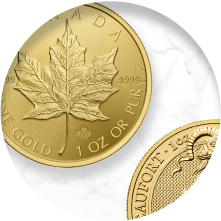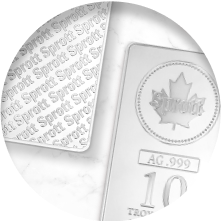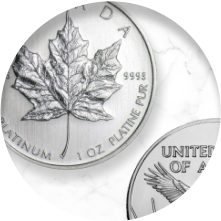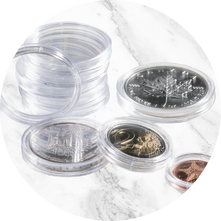In this latest Sprott Money "Ask the Expert" episode, host Craig Hemke sits down with Michael Lebowitz to dissect the economic turbulence facing markets mid-2025. From shifting Fed policies to the implications of new tariffs, they dive deep into what these crosscurrents mean for the gold price, silver price, and broader market sentiment. Is the U.S. economy headed for a recession or just slower growth? How do rising bond yields affect the price of gold and silver? And is now the time to buy gold or buy silver? Don’t miss this essential discussion that cuts through media noise to provide actionable insights for investors in precious metals and beyond.
Buy Gold As Protection Against Economic Uncertainty
In the recent Ask the Expert segment hosted by Sprott Money, Michael Lebowitz from RealInvestmentAdvice.com joined Craig Hemke to provide his market insights during a turbulent economic period. Lebowitz, who co-manages wealth portfolios with a conservative strategy alongside Lance Roberts, shared his outlook on the broader U.S. economy and precious metals like gold.
As the conversation unfolded, Lebowitz reflected on the unpredictable state of the U.S. economy. “The economy was slowing, stimulus was leaking from the market,” he explained, suggesting the business cycle was naturally heading toward slower growth. However, the implementation of tariffs introduced a new dynamic, affecting sentiment drastically. “Consumer sentiment, corporate sentiment fell off a cliff,” Lebowitz noted. While immediate consumer behavior didn’t reflect this shift, he acknowledged that the data often lags behind reality: “It takes a few months for me not buying something... to show up in economic data.”
He drew attention to the short-lived consumer rush to purchase items like cars and cell phones ahead of tariffs, followed by a drop-off in demand: “Retail sales two months ago were up 1.7%... They're only up 0.1% [now].” This kind of volatility makes it difficult to assess whether the U.S. is truly headed toward recession. However, he warns that unless corporations find a way to handle the tariffs without sacrificing profits, “they’re going to lay off employees... stop expanding... that’s bad for the economy.”
Lebowitz’s view is nuanced, admitting, “The odds of [a slowdown] happening are probably increasing.” Yet, he also highlights potential positives such as favorable tariff agreements or tax cuts that could improve the economic landscape. Despite this, he maintains a cautious outlook, emphasizing that none of these factors offer instant impact.
Gold Spot Price Reflects Global Trade And Inflation Narratives
Turning the discussion to bond yields and gold, Lebowitz provided a critical take on what’s really driving the recent moves in markets. He pointed out that despite the swings in sentiment and headlines, bond and equity markets are largely flat: “Stocks and bonds are basically unchanged this year... They don’t reflect the ups and downs that both markets have had.”
In analyzing the gold spot price, Lebowitz emphasized how narratives often outweigh fundamentals in the short term. “The narratives are that tariffs are very inflationary. We think they’re actually deflationary.” He draws on historical data, stating, “Tariffs will be proven deflationary as they were in 2018, as they were during the Great Depression.”
Additionally, the shrinking demand for the U.S. dollar on the global trade stage affects gold indirectly. “If you're reducing global trade, the need for dollars is not as big,” he said. Consequently, this reduces foreign investment in U.S. assets. “Our funding needs are greater. Money coming from outside is potentially less.” This imbalance is seen by many investors as bullish for gold, which acts as a hedge against inflation and currency debasement.
He stressed that while bond yields are influenced by inflation and economic activity, recent inflationary metrics have actually been lower than expected: “PPI today was minus 0.4%... That’s where we should see tariffs and they fell.” This contradictory data further clouds investor decisions, but underscores the long-term value of gold.
Buy Silver And Treasuries In A Volatile Yield Environment
When asked about specific yield levels that would cause concern, Lebowitz cited the 5% yield on the 10-year Treasury as a crucial psychological and financial threshold. “At 5%, you really should be attracting the insurance companies, the pension funds, the endowments,” he explained, noting these institutional investors rely on stable returns.
He discussed how the Treasury might respond if demand falters. “One of the things making the rounds is that the Treasury could reduce these supplemental leverage ratios... allowing the banks... to buy treasuries.” This would enable banks to support the market without needing intervention from the Federal Reserve.
The discussion then turned to yield curve control and its potential implications. “I think there is a cap on yields... whether that’s five, five and a quarter, four and three quarters,” he speculated, indicating that policymakers are likely monitoring this closely. He emphasized that long-term bondholders should feel reassured: “We’re much closer to that line [of policy intervention] than the short hedge funds think we are.”
Lebowitz also highlighted the silver market and its interconnectedness with inflation and interest rate expectations. Just like gold, silver performs well in uncertain monetary environments, and its dual role as both a monetary and industrial metal provides additional upside during periods of economic reflation or central bank intervention.
Investing In Gold As Long-Term Protection Against Currency Devaluation
Lebowitz concluded the segment by returning to the gold market and offering valuable guidance for both new and seasoned investors. “It’s corrected a little. It’s kind of getting back to its support line, which I think is healthier,” he explained. Although recent gains have been driven by short-term narratives—like concerns over deficits and the U.S. dollar—he urged viewers to differentiate between traders and investors.
“Gold and the stock market have been polar opposites... So I think what’s important as gold investors is to separate out the trading environment from your long-term fundamental thesis.” For those holding gold as a hedge against fiat currency devaluation, he stated unequivocally, “Then it’s fine to buy it here.”
He warned against being overly influenced by daily price movements: “If you own gold, understand why you own it and stop looking at it... Whether it’s $5,000 or $2,500... your thesis proves correct, you’ll be just fine.” Gold, he says, is fundamentally about preserving purchasing power: “It’s not really the price of gold... It’s the price of the dollar going down.”
Host Craig Hemke echoed the sentiment: “It’s not that gold’s $3,300 an ounce. It’s that it takes now $3,200 to get the same ounce of gold.” This long-term perspective is crucial for investors who have chosen gold to protect their wealth from inflation and central bank policy missteps. Lebowitz concluded with a timeless insight: “With something like gold, it’s about as clean as it gets.”
Start protecting your wealth now — invest in gold and silver today. Contact the Sprott Money team.
Craig Hemke (00:00)
Greetings once again from Sprott Money at SprottMoney.com. We've reached the middle part of April, which means typically it's time for Ask the Expert, that video, that podcast, where we get a chance to reach out to some movers and shakers, some experts in economic analysis, precious metals, all around the markets. And it's something that we do every month here on the Sprott Money channel. So make sure you don't miss any of it by hitting the like or subscribe button while you're here. I'm your host, Craig Hemke, and joining us this month is Michael Lebowitz. Michael works for a company called RealInvestmentAdvice.com. I'll have him tell you what they do and tell you what his role is there. Michael, good to see you.
Michael Lebowitz (00:54) Great having me back. Thanks, Craig. I appreciate it. We are wealth managers. We manage our clients' wealth with stocks, bonds, other assets, and we tend to have a little more of a conservative bent. We're active managers, and it's my job, along with my partner Lance Roberts, to manage portfolios and deal with the headaches and with the ups and downs of the roller coaster that we're on.
Sprott Money Inc. (01:23) Well, and you and Lance do a terrific job of providing public analysis as well. It seems like even sometimes more than once a week. Where can people find your analysis? Because it's certainly helpful.
Michael Lebowitz (01:37) So go to realinvestmentadvice.com and Lance and I are always writing. We write a daily commentary. You can sign up for it and get it in your email box every morning. We write longer articles, and the articles are to inform our clients. They're to help other people that aren't necessarily clients get our perspective on the economy, on markets, on all kinds of things financial. And like Lance and I always say, it helps Lance and me get a little smarter.
Michael Lebowitz (02:07) I wrote an article on behavioral traits, about financial behavioral traits a couple of months ago, because I knew we were going into a rough year of ups and downs and volatility. And I wanted to make sure that I had my behaviors in line and I understood what I'm good at, what I'm not good at. So a lot of times we write to further our knowledge too, and it helps everyone get maybe a little bit smarter.
Sprott Money Inc. (02:34) For sure. Again, go to realinvestmentadvice.com. I'm sure there's just a link to click if you want to get the emails when everything goes live, when you get new posts.
All right. Well, I tell you what, yes, you and Lance do great work. And I know we've had you on for these Ask the Expert segments before. And I want to have you back because there just seem to be so many cross currents at this point, you know, in what direction specifically the U.S. economy is heading. Because if we can get that part right, that'll kind of give us an idea of what Fed policy might be for the remainder of the year and what the liquidity picture might look like by the end of the year too. Again, it's been baffling for a while.
I thought we'd see a recession last year. That didn't happen. I thought, okay, well, certainly with the yield curve uninverting and getting a positive slope again, that ought to do it here this year. And it looked like maybe I was going to be right for a while. I know things are picking up. Where do you feel the U.S. economy is here in the midpoint of 2025?
Michael Lebowitz (03:34) So I think it's fair to start with my assessment of the economy before we got into the tariffs kind of late last year. The economy was slowing, stimulus was leaking from the market. There wasn't really nearly as much new stimulus coming in, and the robust economy was growing long in the tooth and it typically cycles. So we were heading towards slower growth. Whether or not it would be a recession, anyone's guess. Then we got hit over the head with the tariffs and the tariffs introduced a new level of complexity. First and foremost, one of the first things we saw in real time was sentiment, consumer sentiment, corporate sentiment fell off a cliff. So the question is always, you survey me and I say things are awful. That's one thing. Did I change my habits? That's what matters.
And the problem we have is that it takes a few months for me not buying something or me doing something reflecting my behavior to show up in economic data. Most forms of economic data, the survey data, which is soft data, it showed up in quickly. And complicating it further is people went out and bought cars and cell phones trying to beat the tariffs. So we saw retail sales two months ago were up 1.7%, which is huge. They're only up 0.1%, which is the data we got today. So, we got a little boost to the economy, I think in kind of February, March, maybe even April. And now I got my cell phone, I got my car, I don't need to buy a cell phone or car in April, May, June, July. So, it's kind of like Christmas.
You get a bunch of sales in December and January and February, you get the opposite effect. So on top of everything else, we're dealing with that. The interesting thing that we're starting to see from the most recent CPI data, PPI data, Walmart's earnings is that companies are not able to pass those tariffs on. So someone's going to pay them. So the question is who?
Michael Lebowitz (05:59) And if the corporations want to keep their sales up, they're paying them. Their profit margins are going to get hit. As a result, they're going to lay off employees. They're going to stop expanding. They're not going to spend as much money. However they decide to do that, that's bad for the economy. So we're kind of waiting on two things. What's the consumer reaction? Are they going to pull back? Are they scared? Are they really as scared as they say they are? And then the second one is what’s Walmart going to do? Are they going to lay off employees to try to keep so that they can eat more of the tariffs and keep sales at least steady and please their shareholders? And I don't really think we're going to have great answers till we get to July, August, September. But I do think we're generally on a downward trend, whether it's recession or slower growth. That's hard to know. But I think that the odds of that happening are probably increasing.
The flip side, there's reason to be optimistic too. If we get tariff agreements that are favorable, if Trump is able to introduce tax cuts and deregulation, there are some silver linings, so to speak. Just a lot going on, a lot of balls in the air. And you don't see the instantaneous results of any of this. It takes a while to flow through data and see how it's truly affecting the economy.
Sprott Money Inc. (07:32) You sound a little bit like Jerry Powell in a way, Michael.
Michael Lebowitz (07:35) Well, I mean, for once I think he was dead on. I don't know what's going on. I see all these forces at work, which one's the stronger force, which one's the weaker force. And the news is changing so quick. And it doesn't help that Trump is very vocal. He's not scared to say anything. Sometimes that's good, sometimes it's bad, but for us, it's very hard.
Sprott Money Inc. (07:47) Right. Right, right. And again, which force, which current is the strongest one that's going to drag things one way or the other? You know, one of the more curious developments, especially since the tariffs, you know, that liberation day or whatever it was called back in early April, is the action in the bond market, which is a tough thing to get my arms around too. That seems to be because of higher nominal rates, and then you could say that's higher real rates as well. It seems to be impacting gold, at least in the last couple of weeks. But you know, a 10-year yield in the U.S. is back to four and a half percent, highest it's been since late early April, right after that whole event. The two-year yield is the highest it's been since late March. Japanese government bond yields are the highest they've been in a couple of decades. What do you think's driving all that?
Michael Lebowitz (08:48) Well, Japan's a different story, but let's just talk about the... the U.S. is really interesting. Stocks and bonds are basically unchanged this year. So if we went to sleep on January 1st and just woke up, looked at the markets, we'd say, pretty boring year. They don't reflect the ups and downs that both markets have had. So I think on the bond side, there's kind of narratives and then there's reality.
The narratives are that tariffs are very inflationary. We think they're actually deflationary. Not to say the prices of some goods won't rise and not to say that a couple of CPI reports may not be higher over the coming months, but generally they're lower for a number of reasons. It's a tax on a free market. Anytime you tax a free market, you are impeding growth. You will impede prices. And that's the basic gist.
And if the money supply is constant, which we know it's not, but if it's held constant, if the price of something goes up, the price of something else has to go down because people can't afford both anymore. You know, substitution effect, there's a lot of reasons to think that tariffs will be proven deflationary as they were in 2018, as they were during the Great Depression and other times. But I think the narrative is that tariffs are going to cause prices to spike.
And Powell's not helping matters by saying he doesn't know what's going on with tariffs and the inflationary impact. The other big problem, and I think this is probably helping gold a little bit, is that look at what we're trying to do. We're trying to cut the trade deficit. That means less countries need dollars. If you're reducing global trade, the need for dollars is not as big.
What happens when we run trade deficits? We run investment surpluses. That money comes right back into the U.S. in the form of loans, buying assets, investing in the USA, etc. At the same time, debt isn't really working the way they said it would. And the expected deficits are rising, not falling. So our funding needs are greater. Money coming from outside is potentially less. Again, these are narratives. I'm not saying this is what is happening.
So who's going to fund that? Well, it's got to be the consumer, corporations. That's the only one left to fund it other than QE or the Fed. But so I think the bond market is running on these narratives. But at the same time, what drives bond yields historically has an extremely high correlation with inflation and to a lesser degree economic activity. The last three or four inflationary numbers were all lower than expected.
PPI today was minus 0.4%. PPI should be showing the impact, not CPI, but PPI, which is producer prices. So it's all the inputs into the final goods. That's where we should see tariffs and they fell by 0.4%. So, I think if you look at fundamentals, it's very easy to get very bullish on bond yields here. But the narratives are the driving factor right now.
Like all markets, every market has a narrative and that narrative is kind of what's behind momentum. But ultimately, valuations, fundamentals, like gravity, kind of take hold of markets and bring them to wherever they need to be.
Sprott Money Inc. (12:29) Is there a level on the 10-year note that you would get a little worried about? You mentioned narrative, you know, there was the unwind of this basis trade that so many big hedge funds fiddle around in, you know, or the massive amount of refunding and reissuance and new issuance that's on the docket for this year of treasuries. Is there a level, I mean, 5%, is there a level on the 10-year that'd make you go, whoa, we got to really watch out what we're doing here in terms of risk assets like stock?
Michael Lebowitz (12:59) That's a good question. And I think most markets gravitate towards round numbers, right? So I think 5% is a reasonable number. And it's not just because it's round. It's because if we break through and above 5%, you should at 5%, you really should be attracting the insurance companies, the pension funds, the endowments, foreign central banks, foreign sovereign funds.
Natural fixed income investors should be jumping on 5% yields. And a lot of them have bogeys, right? If a pension fund can earn 5%, they can pay out all the money and they're in great shape. You apply leverage to 5% and now you can be talking about 8, 9, 10% returns or even more on a relatively risk-free asset.
If yields get up to those levels and there's just no buying demand, I may get a little worried. Now, the other side of it is what we kind of alluded to. What's the Fed response? What's the Treasury response? One of the things making the rounds in the news is that the Treasury could reduce these supplemental leverage ratios, the SLR ratios for banks, which the largest eight banks have capital requirements above and beyond all the other banks to basically stop them from using too much excessive leverage. Rumor has it that they're going to cut those SLR ratios or get rid of them or whatever they're going to do, allowing the banks, especially those big eight banks, because those are the ones that really buy treasuries, to buy treasuries and make loans and do other things. So it'll take the handcuffs off the banks who are big buyers of US Treasuries.
So the question is, if we really break through 5%, who's going to come to the rescue? Because this government can't afford yields of 5%, right? If you want to cut deficits, forget those, just cut the interest rate. It's not political. I guarantee you every single senator and representative will vote to reduce interest rates. That's the one thing they can probably agree on would be the best thing they could do is reduce interest rates. There is no political bias. There's no vote from Congress. You get interest rates down, you cut the interest expense significantly. And you try to do it with defense or education or anything else, Medicare, Medicaid, forget it. You have political headwinds.
I'm sure Besson is looking at that 10-year yield every day, and I'm sure Trump's yelling at him to get it down. So I think if you break through 5%, you have to wonder where's the Fed, where's the Treasury, where's the President, and where are those natural buyers that should be jumping to buy 5% yields.
Sprott Money Inc. (16:06) I hadn't considered that SLR change that you were talking about. That would make sense. You could sure see that. I mean, those banks are all primary dealers. You might as well let them employ some, because they're going to need the cash wherever they can get it from, it would seem, with the Fed as a last resort. Do you think eventually, this all yields or heads to some kind of yield curve control program where the Fed, like as a worst case, just says, hey, look, we're a buyer of everything above 4% or 3% or something?
Michael Lebowitz (16:37) Potentially. I mean, it's happened in the past. You know, nothing would surprise me. But I think there is a cap on yields. You know, it's anyone's guess whether that's five, five and a quarter, four and three quarters. I don't know. But I guarantee you, Besson and Powell and others are having discussions on what their threshold is, what the line in the sand is. And I look, honestly, if you're long treasuries, which we are, I think you should be comforted that we're much closer to that line than I think than the short hedge funds think we are.
Sprott Money Inc. (17:20) Yeah, yeah. What about lastly, your long treasuries and you work with all your individual clients individually, meaning, you know, their specific needs, obviously. What's your current look, figure out how you're looking at the gold market after the, you know, the first four months of the year were so strong, actually the last couple of months of last year as well. How do you feel about it now?
Michael Lebowitz (17:41) It's corrected. It was extremely overbought there for a while. It's corrected a little. It's kind of getting back to its support line, which I think is healthier. But, you know, I think gold is riding on some of these same narratives that the dollar is going away, that the deficits are hugely problematic, that tariffs are inflationary. So one thing that we've seen that's been very clear is gold and the stock market have been polar opposites of each other. Stocks go up, gold goes down, gold goes up, stocks go down. So that's the trade. So I think what's important as gold investors is to separate out the trading environment from your long-term fundamental thesis.
And the thesis for gold, if that makes sense to you as an insurance policy, as currency, as all the things that gold is supposed to do, then it's fine to buy it here. But if you're buying it to make a profit over the next three weeks, that's up to technicals and traders. And whatever happens today, what gold's up twenty-three bucks today, that has nothing to do with anything fundamental. That's just trading. If you want to know where gold or stocks or bonds or anything is trading minute to minute, that has nothing to do with anything other than the impulse of traders. If you want to know why gold or why stocks or why bonds did something over five years, that's largely fundamentals. And it's a whole spectrum between trading and fundamentals. And it's in these volatile markets, it's hard to separate the trader in us from the kind of investor in us. And I think everyone, gold's a great example of this.
If you own gold, understand why you own it and stop looking at it. It doesn't matter whether it's $5,000 or it's $2,500 because if you own it for the long haul and your thesis proves correct, you'll be just fine. And I say the same thing with bonds. Buying bonds at 5%, if you think this economy is going to slow and inflation is not a problem, are a steal here. They could go to five and a quarter, but if they're back down to 2 or 3%, you're going to be very happy.
Sprott Money Inc. (20:08) The way you can lever those things too, like you said, that's a pretty good trade for a hedge fund. Yeah, it's like—and I just probably good time to remind folks of this, you know, because I fall for it too. You know, I get all, you know, looking at the price go up and down. But I think the proper way to look at if you bought it because you're worried about devaluation, infinite money printing. It's not that gold's $3,300 an ounce. It's that it takes now $3,200 to get the same ounce of gold. The gold hasn't changed. It's just that it used to take $2,200 of those dollars to get them, and now it takes $3,200. It's the dollar to gold ratio that's changing. It's not so much the gold price, and that's why most folks bought it in the first place.
Michael Lebowitz (20:51) And that's, it's funny. My dad has since passed away, asked me a question very similar that I said, it's not really the price of gold or stocks or anything that's going up. It's the price of the dollar going down. Like we all think of the price of like my phone going up. I mean, some of that's true, but some of it is just the dollar going down. But the dollar is always one. Therefore, prices have to reflect the dollar. It's a tough concept, but when you get it, you get it. And with something like gold, it's about as clean as it gets.
Sprott Money Inc. (21:28) No doubt, and again, the historical record goes back far enough, you can go, let's see, was—it only took 35 of those dollars 50 years ago, and that was pretty recently, it was 3,500 of those. You can certainly spot the trend. Michael, it's always so much fun to visit with you. I want to just, as we wrap up, tell everybody again, because you're on Twitter as well, but they can go to realinvestmentadvice.com and sign up so they get a notice every time you and Lance print something, but also, what is your Twitter so people can find you there?
Michael Lebowitz (21:57) @MichaelLebowitz on Twitter. I post most of our stuff up there. I'm not as active as I was on Twitter, but you can find everything at RealInvestmentAdvice.com. You can sign up for our daily commentary, which just gives you kind of—it's a short read. It's a cup of coffee and updates you on what's going on in the markets, interesting things. Our article, our new articles are always summarized with a link. So keep up to date with whatever Lance and I are thinking.
Sprott Money Inc. (22:30) And I beg people to do this all the time. I've been at this for 35 years. You know, so I'm getting to be so old. I feel like I'm this old grizzled veteran, but I don't recall it being like this. You know, if you're just simply relying upon CNBC or, you know, the news network in Canada for your financial news, you're just going to be led down one path. You need as many independent and objective bits of analysis you can find and certainly you can find it in the work that Michael and Lance do, in my opinion.
Michael Lebowitz (23:05) Yeah, and I always—I don't rely on any one news source. Like just for general news, I watch CNN, I watch Fox. I want to hear kind of what they're both saying. Same with finance news. I'm all over the place. And one of our slogans is kind of—we're not bullish. We're not bearish. We're the eagle. We just soar above and we're just figuring out what's going on. And we're not wed to any one market direction or principle or ideal. I may be saying we're not having a recession and you could interview me in two weeks and I'd say, yes, we are.
Sprott Money Inc. (23:41) Yeah, right. That is how things are changing, but that's exactly right. And boy, that's a great way to look at it here in this year, because you just don't know, even by six months from now, who knows what the world's going to look like. So we've got to stay on top of it as best we can. Michael, thank you so much for your time. It's always so much fun to visit with you.
Michael Lebowitz (23:54) Right, right. Anytime, Craig.
Sprott Money Inc. (24:02) And again everybody, on your way out hit that like or subscribe button so you're notified. It's still in the middle part of May so there's a lot more content coming just this month, but again that's every single month Sprott Money puts out content that you don't want to miss. So hit that like button, subscribe button on whatever channel that you've been watching this so don't miss out on any of it. Michael Lebowitz, thank you so much for your time. It's always great to visit with you. From all of us at Sprott Money, SprottMoney.com, thanks for watching. We'll have more content for you coming up here later in May.
Michael Lebowitz (24:22) My pleasure.
Don’t miss a golden opportunity.
Now that you’ve gained a deeper understanding about gold, it’s time to browse our selection of gold bars, coins, or exclusive Sprott Gold wafers.
About Sprott Money
Specializing in the sale of bullion, bullion storage and precious metals registered investments, there’s a reason Sprott Money is called “The Most Trusted Name in Precious Metals”.
Since 2008, our customers have trusted us to provide guidance, education, and superior customer service as we help build their holdings in precious metals—no matter the size of the portfolio. Chairman, Eric Sprott, and President, Larisa Sprott, are proud to head up one of the most well-known and reputable precious metal firms in North America. Learn more about Sprott Money.
Learn More
You Might Also Like:


















Looks like there are no comments yet.